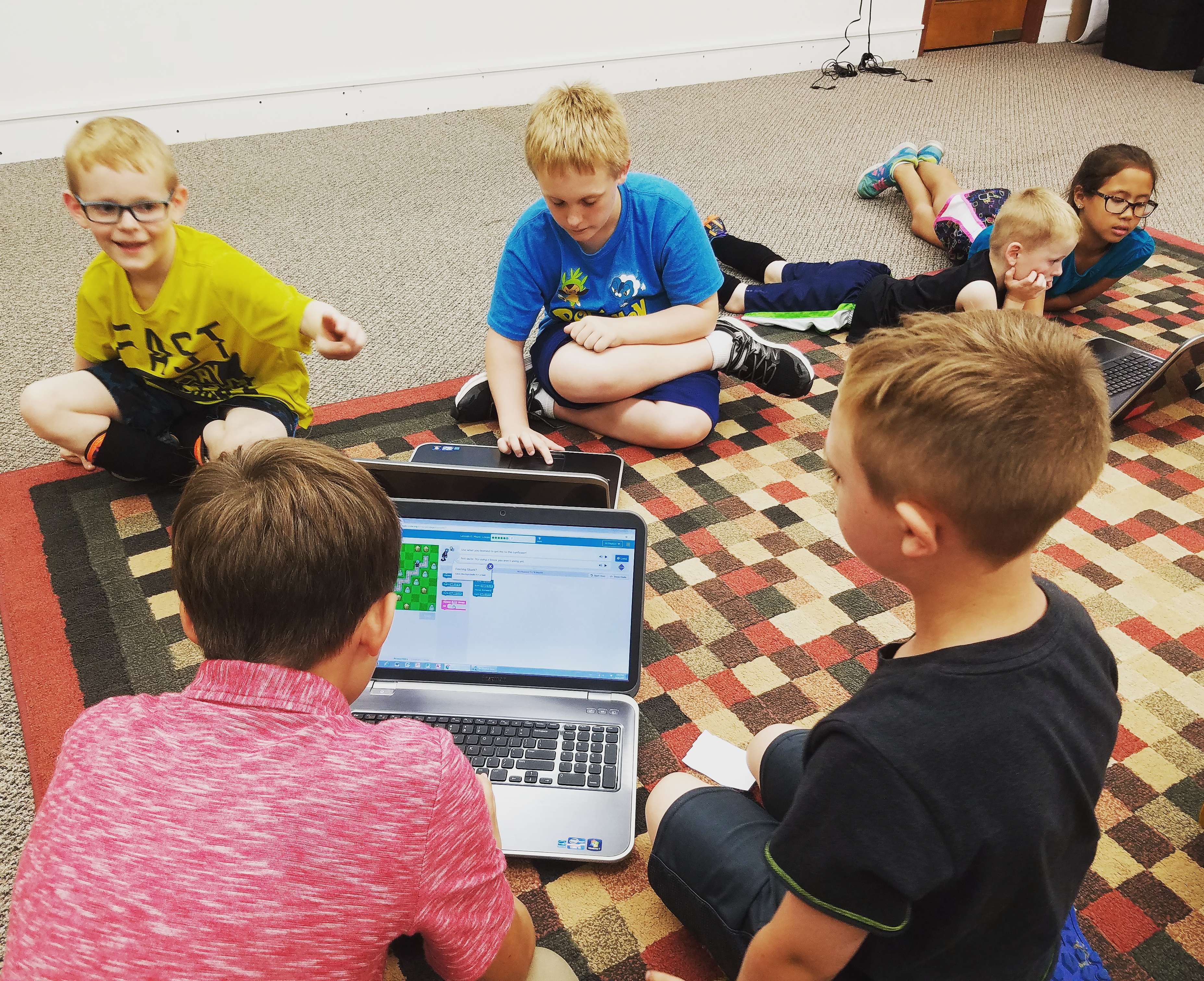Our second Kids Coding Club meeting is completed! Offering coding programs has become one of the highlights to my week! The kids are interested in the topic and the activities are paced well enough so that they move from one lesson to another quick enough without getting bored.
If you have not read my Week 1 notes, you can get them here. I have instructions on setting up a teacher and student accounts on Code.org, and a first week lesson plan to introduce coding to your group.
For Week 2, we continued following the “Beginning Code Camp with Code.org” lesson plan provided by Jen Fait on WisCodeLiterati. For week 2, we learned about “Loops” in programming, and how they are basically synonymous with the repeat concept. Instead of writing numerous lines of code to have the program accomplish a task over and over, we can write one line of code, and loop it as many times as we wish.
 I had 11 kids in this class. Only three of them were repeats from Week 1. I think that 12 kids would be a good maximum number, so if this group becomes really popular, I will look into offering it at more than one time each week.
I had 11 kids in this class. Only three of them were repeats from Week 1. I think that 12 kids would be a good maximum number, so if this group becomes really popular, I will look into offering it at more than one time each week.
We followed Code.org’s Teacher Lesson Plan, “Getting Loopy” lesson plan fairly closely. The kids caught on to the idea very quickly that loops are another way of asking a program to repeat your instructions. After the unplugged activity, I paired up the students together into groups of two, showed them how to log on to our library’s section of Code.org, and told them to begin working on Lesson 6: Maze: Loops. In our hour, a few groups finished all 14 of the puzzles in Lesson 6. If you have time, kids are able to further keep learning about loops in Lesson 7: Artist: Loops and in Lesson 8: Bee: Loops. For our group, I encouraged them to continue working on these lessons at home.
While the kids understood the concept of loops, it took all of them a few challenges in Code.org to actually use the loop command while writing code in the blockly code language Code.org uses. Once they understood, I heard them gasp, and they quickly took the keyboard again with new vigor to try out this new concept.
For week 1, I had kids sitting at tables. For this week, I also had kids sit on the floor. We began our program sitting in a circle, and it made a big difference in  getting the kids and parents to feel comfortable as a group. When I brought out the computers, the kids sat in a rough circle and began working with their partner. However, since everyone was on the floor, kids would lean over and look at their neighbor’s screens if they needed help or wanted to see what puzzle the other groups were working on. When I felt the kids were starting to get restless (after about 45 minutes), we had a countdown from 30 to 1, and then I asked all the kids to shut the cover of their laptop, set their laptop to the side, move back into sitting in a circle, and look at me. We then had a few moments where we talked about how far into the challenges they were able to get, what they learned, and what they thought loops could be used for in programs they would like to write someday. This was also a great time for them to ask questions, and for me to ask them what coding projects they would like to work on in the future.
getting the kids and parents to feel comfortable as a group. When I brought out the computers, the kids sat in a rough circle and began working with their partner. However, since everyone was on the floor, kids would lean over and look at their neighbor’s screens if they needed help or wanted to see what puzzle the other groups were working on. When I felt the kids were starting to get restless (after about 45 minutes), we had a countdown from 30 to 1, and then I asked all the kids to shut the cover of their laptop, set their laptop to the side, move back into sitting in a circle, and look at me. We then had a few moments where we talked about how far into the challenges they were able to get, what they learned, and what they thought loops could be used for in programs they would like to write someday. This was also a great time for them to ask questions, and for me to ask them what coding projects they would like to work on in the future.
Definitely, my biggest takeaway was that having kids sit on the floor was the best. It allowed the group to talk and interact together as a club working on a common goal: to finish the lesson challenges.
